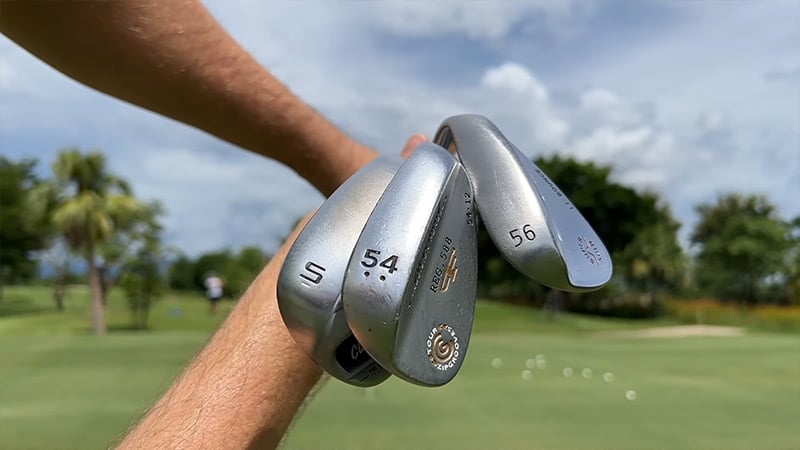In the world of golf, precision and finesse are just as important as power and distance. Nowhere is this more evident than in the short game, where golfers must navigate a variety of challenging situations around the green. Among the arsenal of clubs designed to excel in these circumstances, the sand wedge is arguably the most crucial. At the heart of its performance lies a critical parameter: the sand wedge degree. In this exploration, we'll delve into the intricacies of the sand wedge degree, its history, and its influence on a golfer's short-game prowess. Wikipedia.org
Understanding the Sand Wedge
Before diving into the sand wedge degree, it's essential to understand what a sand wedge is and its role in a golfer's bag. The sand wedge is one of the several specialized clubs used primarily for chipping and pitching around the green. Its design features a lofted face and a unique bounce angle on the sole, making it ideal for getting the ball out of bunkers, escaping rough, and executing high, soft shots onto the green.
The sand wedge's loft, typically ranging from 54 to 58 degrees, sets it apart from other wedges in a golfer's arsenal. While pitching and gap wedges have lower lofts, the sand wedge bridges the gap between these wedges and the high-lofted lob wedge. This versatility makes it a valuable tool for navigating various short-game scenarios.
The History of the Sand Wedge Degree
To understand the origins of the sand wedge degree, we must take a brief trip back in time to the early 20th century. Prior to the development of the sand wedge, golfers primarily relied on clubs with less loft to extricate themselves from sand traps and other tricky lies.
Enter Gene Sarazen, an American golfing legend. In 1931, Sarazen introduced the world to the first sand wedge, aptly named the "Sarazen Wedge." What set Sarazen's invention apart was its high loft angle of 55 degrees, a radical departure from the clubs of the time. This innovation allowed golfers to hit shots from sand bunkers with greater ease and precision than ever before.
Sarazen's sand wedge revolutionized the short game, eventually leading to the design of the modern sand wedge with varying degrees of loft. Today, golfers can choose from a range of sand wedge degrees to suit their playing style and course conditions.
Choosing the Right Sand Wedge Degree
Selecting the appropriate sand wedge degree is a critical decision for any golfer looking to improve their short game. The ideal loft will depend on a variety of factors, including a player's skill level, the type of courses they frequent, and the specific shots they need to execute.
- Skill Level: Novice golfers or those with a higher handicap may benefit from a sand wedge with higher loft, typically around 58 degrees. This added loft helps to launch the ball higher and land it softly, making it more forgiving for less-experienced players.
- Course Conditions: Golf courses come in various shapes and sizes, each with its own set of challenges. If you frequently play on courses with deep bunkers or thick rough, a higher-lofted sand wedge can be advantageous. Conversely, if you play on courses with fast, firm greens, a lower-lofted sand wedge may be more suitable.
- Shot Variety: Consider the types of shots you need to execute around the green. If you frequently face situations where you need to carry the ball over obstacles or stop it quickly on the green, a higher-lofted sand wedge is your friend. Conversely, a lower-lofted sand wedge can be valuable for chip-and-run shots.
- Personal Preference: Ultimately, the choice of sand wedge degree comes down to personal preference. Some golfers may prefer the feel and performance of a particular loft, and that comfort can lead to improved results.
Fine-Tuning Your Short Game
Once you've selected the right sand wedge degree for your game, it's essential to practice and fine-tune your short-game skills. The sand wedge, like any other club, requires a combination of technique and touch to master. Here are some tips for improving your short game:
- Practice Bunker Shots: Spend time practicing shots from sand bunkers, as this is one of the primary purposes of the sand wedge. Focus on achieving consistent contact with the sand behind the ball to produce a clean, high, and soft shot.
- Work on Distance Control: Understanding how far your sand wedge carries the ball with different swings is crucial. Practice varying the length of your backswing and follow-through to control distance on chip and pitch shots.
- Master Different Lies: Practice from various lies, including tight lies, rough, and uneven terrain. Each lie requires adjustments in technique and club selection.
- Short-Game Drills: Incorporate short-game drills into your practice routine to improve your skills. These can include chipping to specific targets, pitching to different distances, and bunker play.
- Course Management: Learn to assess course conditions and choose the right club and shot for the situation. This includes understanding the role of the sand wedge in your overall strategy on a given hole.
Conclusion
The sand wedge degree is a fundamental aspect of a golfer's short-game arsenal. Its lofted design, born out of innovation and necessity, has become a vital tool for navigating the challenges of the golf course. Choosing the right sand wedge degree and mastering its use can lead to improved performance and lower scores on the course.
Whether you're a beginner learning the basics or an experienced player seeking to refine your short-game skills, the sand wedge and its degree of loft are keys to unlocking success around the green. So, the next time you find yourself facing a challenging lie, remember that the sand wedge degree holds the power to transform a difficult situation into a moment of finesse and precision. Visit official website for more details impactgolfer.com

